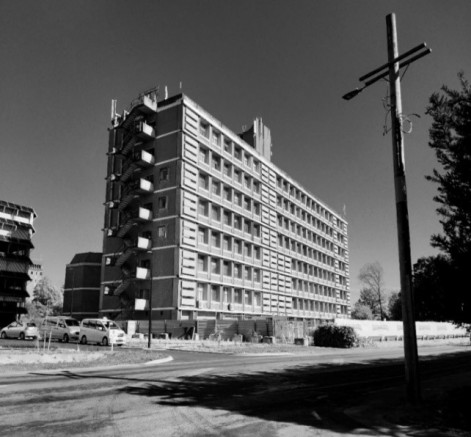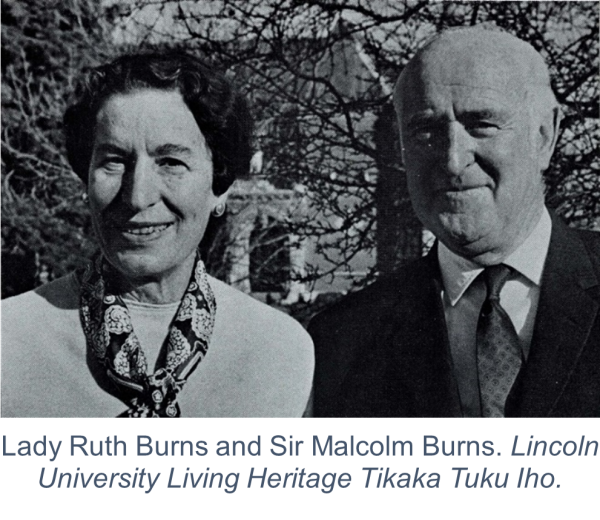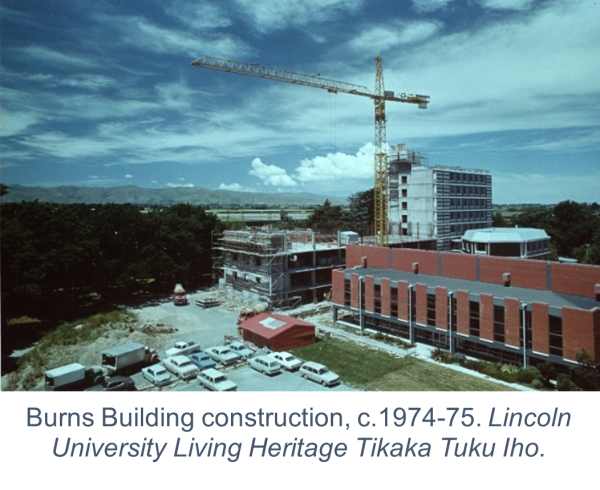Ode to an Icon
15 June 2024
This exhibition has now closed.
Whether you’ve considered the Burns Building to be a concrete eyesore on the horizon or have a quiet fondness for its monumental place in the community, there is no denying that the Burns Building at Lincoln University is iconic. With the skyline in Lincoln about to change forever, we are reaching out to our local community for personal responses to this building and its 60-year history in Lincoln township.
Whatever your creative preference - drawing, photography, video or painting - we’d like to curate a selection of pieces into a commemorative exhibition to be displayed temporarily on campus and in perpetuity through our Living Heritage Tikaka Tuku Iho online archive:
- Age is no barrier – we are happy to receive responses from creatives of all ages!
- A range of formats are encouraged.
- Forward an image of your entry to odetoburns@lincoln.ac.nz with a short paragraph on what this building means to you. Include all the details – your name/artwork title/date/media/dimensions. All entries are eligible for our online component, but we may need to restrict numbers for the physical exhibition.

"Goodbye, Burns building!" photographed by Inderjit Bharaj, October 2023. Lincoln University Living Heritage Tikaka Tuku Iho.
Our final deadline is Friday 14th June but please feel free to send in your responses as soon as the creative juices are flowing. The exhibition is anticipated for a July/August 2024 run.
The Burns demolition
The seven-storey Burns Building opened in 1976 as a second teaching wing alongside the Hilgendorf Building, both Brutalist concrete monoliths. It was designed by architecture firm Trengrove, Trengrove and Marshall who were first founded in 1922 by notable Christchurch architect William Trengrove. At the time, together the two buildings were “revealed in appealing architectural form, in functional comfort and efficiency, and in generous proportions of space.” Hilgendorf, however, sustained irreparable earthquake damage in the 2011 quakes and its demolition was completed in 2019.
The time has now arrived for Burns to follow, with a landscaping project in the works to fill its site. The building recently housed the Faculty of Agriculture and Life Sciences with offices, laboratories, teaching labs, and one of the largest entomology collections in the Southern Hemisphere – all now relocated to Waimarie, our new flagship science facility.
Why is it called “Burns”?
Well, the building was named for Sir Malcolm Burns. He completed a MSc in 1932, was appointed lecturer in Soil Science in 1937, and became Director of Lincoln College in 1952, a position he held for the next 22 years. He contributed significantly to the development of the university in its research and practical output. He and his wife Ruth had a significant impact on the life and success of students during their time here. Dr Ian Blair's centennial history The Seed They Sowed records that the "name was appropriate, the monument matched the man: it was large and commanded attention from all angles of vision.”

|

|

